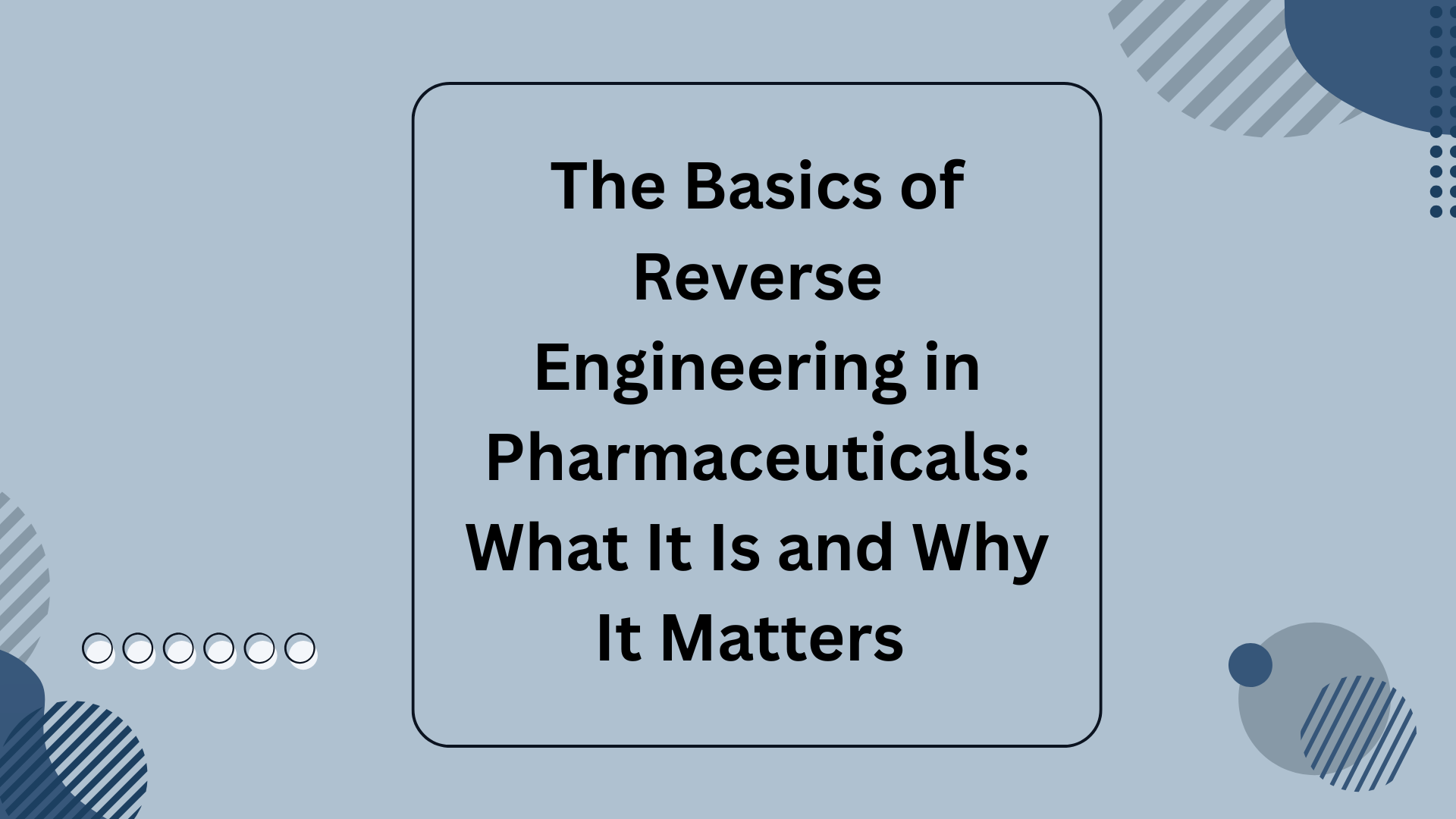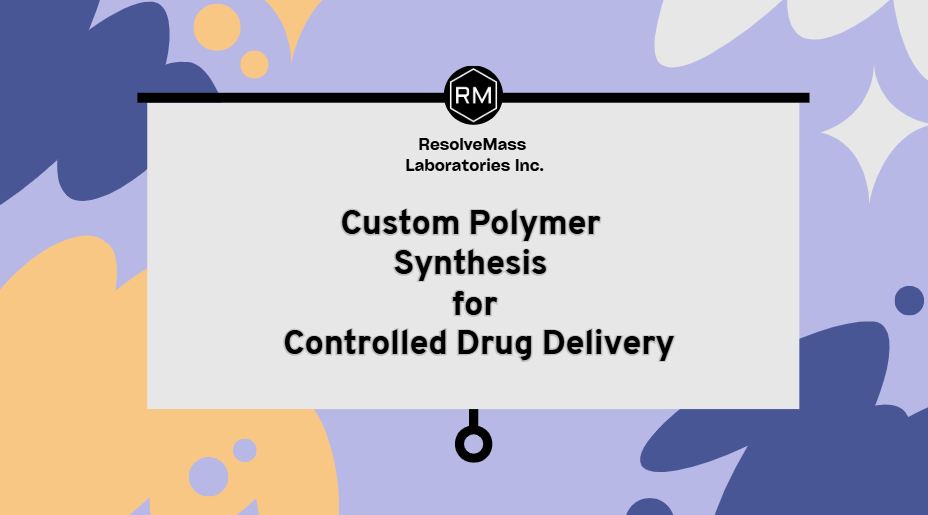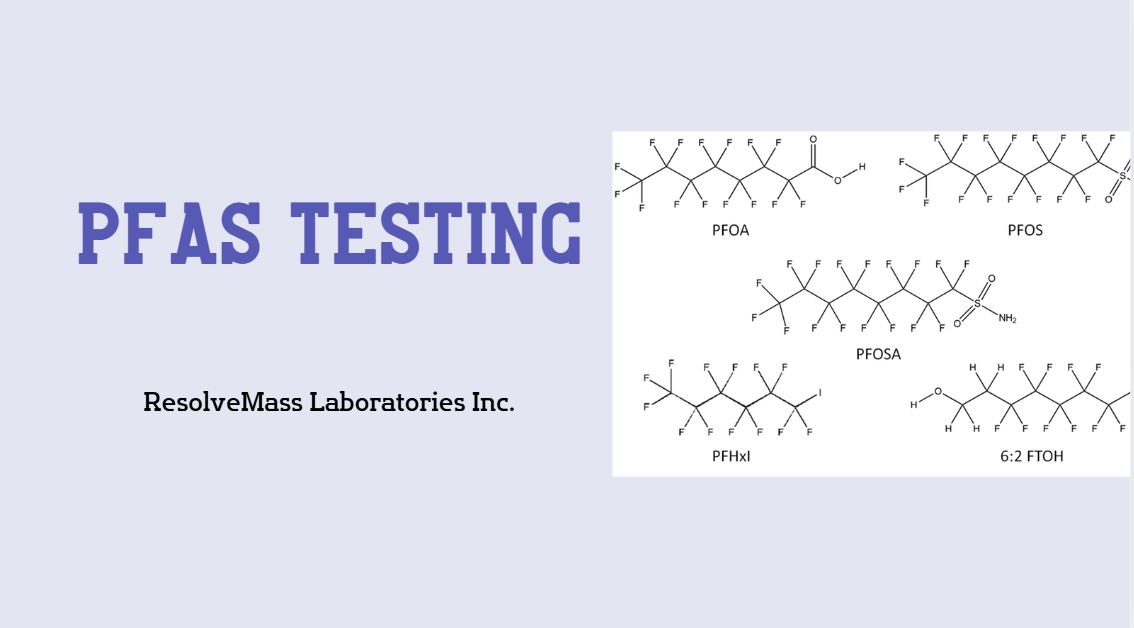Reverse Engineering of Pharmaceuticals is the scientific process of analyzing and deconstructing an existing drug formulation to understand its composition, design, and functionality. At ResolveMass Laboratories Inc., we specialize in Reverse Engineering of Pharmaceuticals to support innovation, bioequivalence studies, and regulatory submissions for both branded and generic products. This analytical approach enables pharmaceutical companies to gain a deeper understanding of how a drug performs, ensuring the development of safer and more effective alternatives. Moreover, reverse engineering is essential in resolving formulation inconsistencies and maintaining compliance with international quality standards.
🔍 Summary of the Article
- Reverse Engineering of Pharmaceuticals helps reveal the complete composition, process, and performance of existing drugs.
- It is vital for generic drug development, quality improvement, and patent strategy formulation.
- Accurate results depend on advanced analytical deformulation methods.
- ResolveMass Laboratories Inc. provides comprehensive reverse engineering and deformulation services across Canada.
- All projects follow ethical, legal, and scientific integrity, ensuring full regulatory compliance.
- Understanding this process promotes innovation, enhances patient safety, and increases access to affordable medicines.
What Is Reverse Engineering of Pharmaceuticals?
Reverse Engineering of Pharmaceuticals involves breaking down a finished drug product to identify its Active Pharmaceutical Ingredients (APIs), excipients, and manufacturing processes. This detailed analysis provides insights into how a drug functions and how it can be safely replicated or improved for generic versions.
At ResolveMass Laboratories Inc., our reverse engineering studies in Canada utilize advanced analytical tools such as LC-MS, GC-MS, and FTIR to deformulate complex drug formulations precisely. These instruments enable accurate identification of trace components and ensure reproducible data. Our scientists also integrate thermal and physical testing to assess drug stability, performance, and shelf-life.
Key Components Identified in Reverse Engineering
- Active Pharmaceutical Ingredient (API): Determines the drug’s therapeutic effect.
- Excipients: Include stabilizers, binders, fillers, and coatings that maintain formulation stability.
- Manufacturing Process: Techniques like compression, granulation, coating, or lyophilization that define product characteristics.
Why Reverse Engineering of Pharmaceuticals Matters
Reverse Engineering of Pharmaceuticals bridges the gap between innovation and accessibility. It enables pharmaceutical companies to develop cost-effective, high-quality alternatives to branded drugs while maintaining patient safety and meeting regulatory compliance. This process also supports formulation optimization, stability studies, and competitive market analysis.
Benefits Include
- Development of bioequivalent generics ensuring therapeutic equivalence.
- Optimization of drug delivery systems for improved patient outcomes.
- Identification of patentable innovations and process improvements.
- Verification of product authenticity and quality through analytical validation.
Explore more about our deformulation analysis service that promotes innovation and compliance with Health Canada and FDA standards.
The Step-by-Step Process of Reverse Engineering of Pharmaceuticals
The Reverse Engineering of Pharmaceuticals follows a systematic scientific approach to ensure each stage produces precise and verifiable data. It integrates chemical, physical, and analytical evaluations to reveal the complete formulation blueprint.
| Step | Objective | Analytical Techniques Used |
|---|---|---|
| 1. Sample Preparation | Obtain representative sample | Homogenization, solvent extraction |
| 2. Qualitative Analysis | Identify components | FTIR, NMR, Raman spectroscopy |
| 3. Quantitative Analysis | Determine ingredient concentrations | LC-MS, HPLC |
| 4. Thermal & Physical Testing | Assess stability and polymorphism | DSC, TGA, XRD |
| 5. Process Simulation | Reproduce manufacturing conditions | Pilot-scale formulation |
| 6. Validation | Verify reproducibility | Dissolution, bioequivalence tests |
Each stage contributes valuable information on the drug’s formulation and performance. Learn more about our analytical techniques in pharmaceutical reverse engineering.
Applications of Reverse Engineering of Pharmaceuticals
Reverse engineering has extensive applications across the pharmaceutical industry. It not only facilitates the creation of generic medicines but also strengthens research, quality control, and intellectual property assessments.
This approach assists in identifying formulation inconsistencies, confirming product authenticity, and ensuring adherence to regulatory requirements. In research and development (R&D), it supports the discovery of new formulations and delivery technologies.
Common Applications
- Generic Drug Development: Enables the creation of therapeutically equivalent alternatives.
- Patent Evaluation: Assesses formulation overlap with existing intellectual property rights.
- Quality Assurance: Validates manufacturing consistency and compliance.
- R&D Innovation: Accelerates formulation design and technology discovery.
ResolveMass Laboratories extends its expertise through reverse engineering service of biopolymers and polymer reverse engineering for medical devices, supporting complex drug systems and advanced materials.
Tools and Techniques Used in Reverse Engineering of Pharmaceuticals
Reverse Engineering of Pharmaceuticals depends on advanced analytical chemistry tools that reveal critical details about drug composition and structure. The combination of multiple techniques ensures accurate deformulation and dependable data.
Common Analytical Tools Include
- LC-MS / GC-MS: For detailed chemical profiling and impurity identification.
- FTIR & Raman Spectroscopy: For molecular and functional group characterization.
- NMR Spectroscopy: For deep chemical structure elucidation.
- XRD & DSC: For polymorph and physical state analysis.
Our polymer deformulation and characterization services employ these technologies to produce reproducible, regulatory-compliant results. The multidisciplinary team at ResolveMass Laboratories ensures all data align with international validation standards.
Ethical and Regulatory Considerations
Reverse Engineering of Pharmaceuticals must adhere to strict ethical, scientific, and legal frameworks. ResolveMass Laboratories Inc. ensures compliance with Health Canada and FDA regulations, following Good Laboratory Practice (GLP) and current Good Manufacturing Practice (cGMP) principles.
Every project is executed with transparency, data integrity, and respect for intellectual property rights.
We Prioritize
- Data confidentiality and protection
- Intellectual property security
- Transparent, verifiable reporting
- Complete regulatory alignment
For additional insights, explore our case studies in polymer reverse engineering. Our regulatory expertise ensures that every result meets global standards.
Case Study: Reverse Engineering of RLD Drug Product
In a recent project, ResolveMass Laboratories conducted the Reverse Engineering of a Reference Listed Drug (RLD) product to support a generic drug submission. Through precise deformulation and API characterization, we successfully replicated the excipient profile and achieved dissolution matching within 5%.
This study demonstrates our capability to deliver data-driven results with regulatory precision, supporting faster development timelines and cost-effective product launches.
Challenges in Reverse Engineering of Pharmaceuticals
While beneficial, Reverse Engineering of Pharmaceuticals presents certain scientific and regulatory challenges. These include complex excipient interactions, proprietary coating technologies, and trace impurity identification.
ResolveMass Laboratories addresses these issues through expertise in analytical chemistry, material science, and formulation engineering. Our advanced instruments and experienced team ensure accurate and reproducible data, even for highly complex drug formulations.
Why Choose ResolveMass Laboratories Inc.?
ResolveMass Laboratories Inc. is a recognized leader in Canada’s pharmaceutical analytical sector. Our commitment to precision, confidentiality, and innovation distinguishes us from competitors. With cutting-edge instrumentation and a highly qualified scientific team, we deliver data that meet global regulatory expectations.
We offer more than analytical results — we provide strategic insights that empower clients to innovate confidently. Learn more about our deformulation analysis capabilities that help your project meet every scientific and regulatory benchmark.
Conclusion
Reverse Engineering of Pharmaceuticals forms the foundation for innovation, quality control, and accessibility in modern drug development. At ResolveMass Laboratories Inc., we integrate scientific precision with regulatory compliance to deliver exceptional reverse engineering and deformulation services for pharmaceuticals, biopolymers, and polymeric materials.
Whether you aim to develop a new generic, enhance an existing formulation, or analyze complex polymer matrices, our expertise ensures accurate, reproducible, and actionable results.
👉 Contact ResolveMass Laboratories today for expert consultation.
Frequently Asked Questions (FAQs)
The primary goal of Reverse Engineering of Pharmaceuticals is to analyze and understand the formulation and manufacturing process of an existing drug. This helps pharmaceutical companies develop bioequivalent generic versions or enhance current formulations for improved safety, stability, and efficacy. It also supports regulatory submissions and market competitiveness.
While deformulation focuses mainly on identifying and quantifying the components of a formulation, Reverse Engineering of Pharmaceuticals goes beyond that. It includes process simulation, material characterization, and functionality assessment to understand how a product performs as a whole. This broader approach ensures complete replication and quality consistency.
Yes, Reverse Engineering of Pharmaceuticals is legal when conducted under ethical and regulatory frameworks such as GLP and cGMP. It must respect intellectual property boundaries and is typically performed for research, bioequivalence, or regulatory purposes. ResolveMass Laboratories ensures full compliance with Health Canada and FDA standards during every study.
The duration of a Reverse Engineering of Pharmaceuticals project depends on the complexity of the formulation and the analytical scope. Typically, studies are completed within 4 to 14 weeks. This time frame allows for detailed component identification, process validation, and quality verification before reporting final results.
Some challenges in Reverse Engineering of Pharmaceuticals include identifying trace-level impurities, understanding complex excipient interactions, and decoding proprietary coating technologies. These issues require advanced analytical tools and expert interpretation. ResolveMass Laboratories overcomes these challenges through multidisciplinary knowledge and state-of-the-art instrumentation.
Yes, Reverse Engineering of Pharmaceuticals plays a vital role in driving innovation within the pharmaceutical industry. By understanding existing formulations, scientists can develop improved versions with better stability, enhanced bioavailability, or new delivery systems. This process ultimately accelerates drug development and expands therapeutic options.
References
- Venkatesh, A., Kaushik, A., Tammannavar, V., & Kathpalia, H. (2025). Analytical techniques for reverse engineering of reference products for the development of generic oral solid dosage forms. International Journal of Pharmaceutical Sciences and Drug Research, 17(1), 74–82. https://doi.org/10.25004/IJPSDR.2025.170111
- Rathore, C., Patel, K., Gajjar, K., & Patel, K. (2022). An overview of abuse-deterrent formulations: Approaches and challenges. Journal of Young Pharmacists, 14(3), 255–263. https://doi.org/10.5530/jyp.2022.14.38


